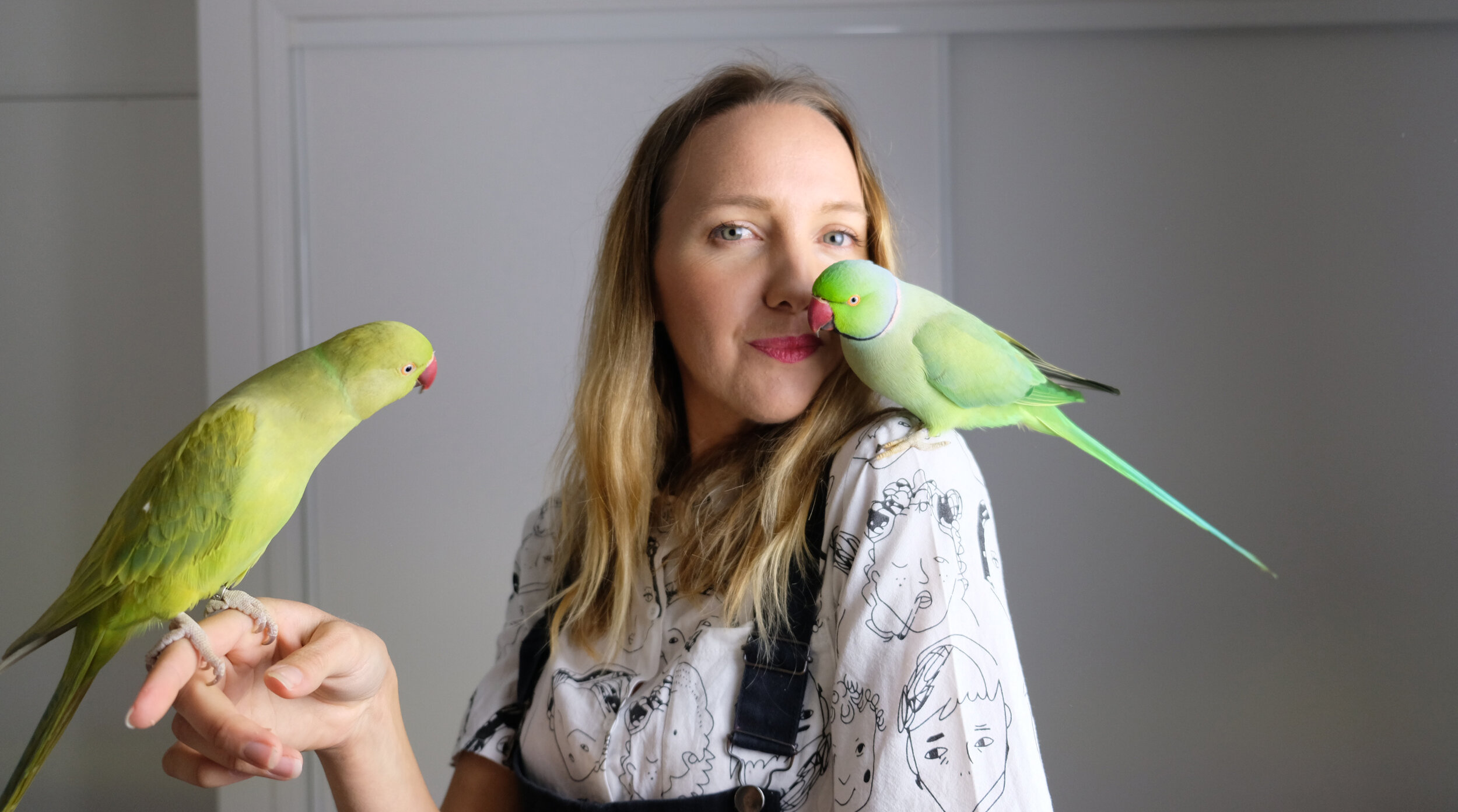TEACHING YOUR BIRD TO “STEP UP”
Before you teach your bird to step up, it must be calm and not afraid of your presence. You should be able to approach your bird in its cage and drop a treat into its bowl without it moving away or showing any signs of fear (if this is still happening, see my previous blog post on “taming a scared bird”). If you have performed this step enough times, your bird should start to actually come towards you when you approach the cage as it is expecting a delicious treat! The next step is to get your bird to accept taking a treat from your hand.
[Note: If your bird is aggressive and bites - then you would use a different technique to train your parrot such as "targeting" or using a perch to teach the step-up. I will write about that Indian ringneck parrot training method in the following blog]
STEP 1
Go up to your bird’s cage and extend a treat through the bars. Make it a delicious treat, something the bird doesn’t normally get to eat (ie. a piece of cashew or almond). It is important that you hold the treat through the bars and don’t move - you don’t want to scare the bird but you want it to come to the treat and take it in its own time. If your bird doesn’t come up to the treat from your hand within a reasonable amount of time, you could try again at a time when your bird is hungrier, perhaps first thing in the morning before you have refilled its food containers.
STEP 2
Once your bird is happily coming up and taking treats from your hand through the bars, you can start to open the cage door and put your hand inside. Again, use the same technique here - keep pushing your hand forward inside the cage (with the treat clearly visible in your fingers) until your bird shows signs of discomfort. Stop and keep your hand there, wait for the bird to calm down, then take your hand out. Again, it is very important to stop moving BEFORE your bird moves away from you. Try again later and you will find you can get your hand a little closer to the perch, wait for your bird to calm down, then take your hand out. Eventually your bird will come up to your hand inside the cage and take the treat out of your hand.
STEP 3
Once your bird is happily coming up to your hand inside the cage and taking the treat, the next step is to get your bird to step onto your hand. To do this, place the treat further up on your hand, so that your bird has to lean over your fingers to reach the treat. Eventually, you will place the treat up near your wrist so that the bird has to place a foot onto your hand to reach it. It is absolutely vital that you DO NOT MOVE your hand. This is a huge trust point for your bird and if your hand is unstable it will be very unlikely to step onto it again with confidence. You will probably find that your bird steps on and off you hand very quickly at first. But eventually it will stay a little longer on your hand each time.
STEP 4
Eventually, you will place the treat far enough up your arm that the bird will step both legs onto your hand to get it. Let your bird step onto your hand and step off again before you move your hand. Eventually, your bird will happily sit on your hand without being in a rush to get off again. At this point, you might want to use your other hand to give them more treats, to reward them for staying on your hand. Once they realise staying on your hand means more treats, they will stay on your hand while you move it out of the cage. Start by moving it towards the cage door just a little bit, then put it back towards the perch and let the bird step off. They gradually increase the distance until your bird is on your hand and out of the cage. Then reward, reward, reward! But don’t go straight into playing with your bird now. Put your bird back into its cage - it’s overcome some huge fears today so let it have the time to think about what it has just learnt - that hands aren’t so scary after all…in fact….they are actually a good thing!
If you've found this tutorial helpful and you'd like to learn the next steps in training your parrot, you might like to join the free Facebeak Fanclub. I share more parrot training guides, helpful tips on solving parrot behaviour problems and behind-the-scenes exclusives with the Fanclub members.


